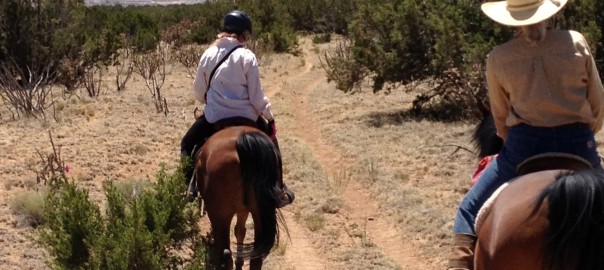Horses are capable of great caretaking.
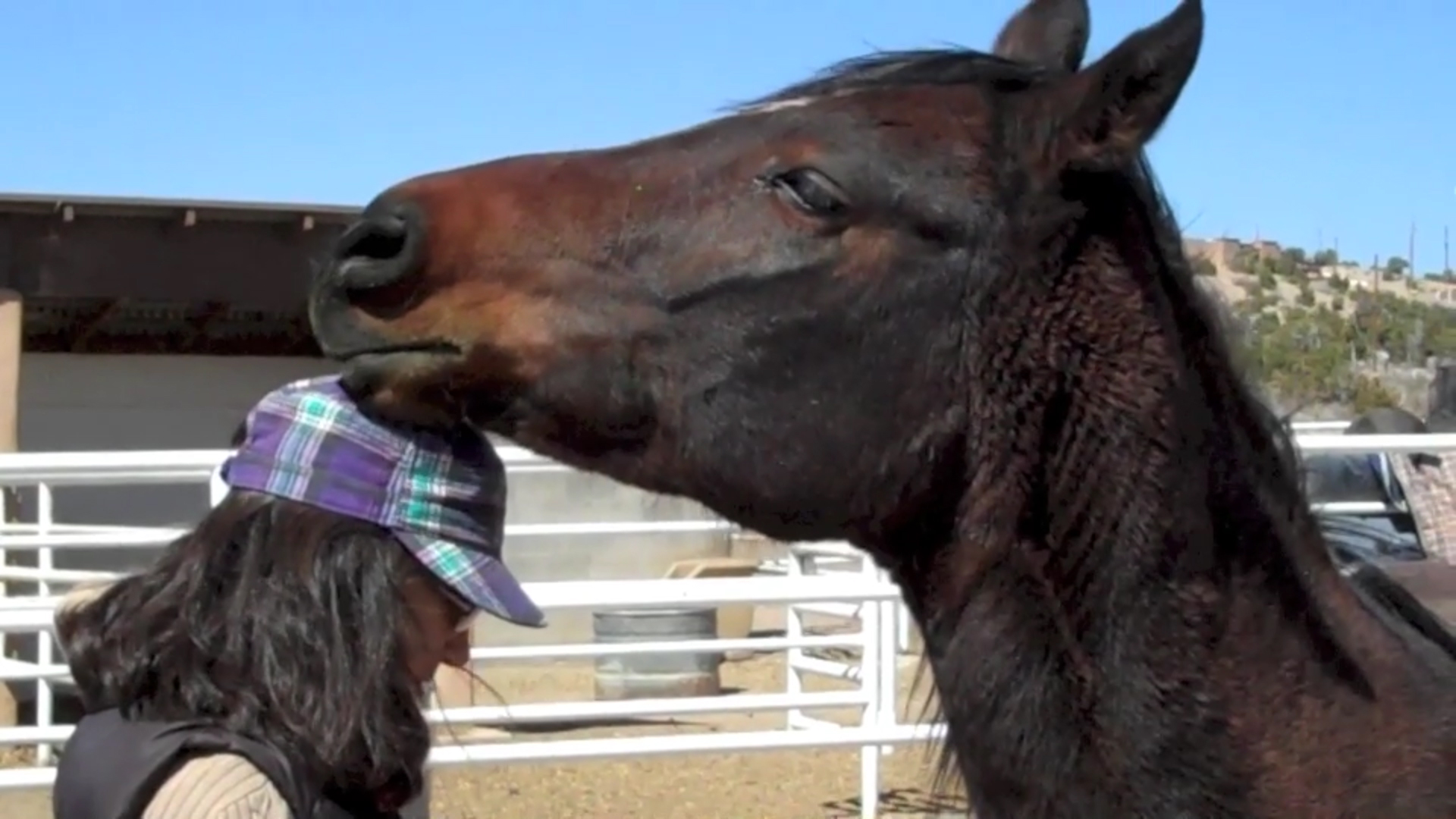 This caretaking can taking many forms, and can be developed it in various ways: through liberty, where the horse can begin to overcome fears and recognize the person as a true leader whom she wants to spend time with. And through bodywork. The central nervous system houses all the information and all the tendencies we have. It’s true for both people and horses.
This caretaking can taking many forms, and can be developed it in various ways: through liberty, where the horse can begin to overcome fears and recognize the person as a true leader whom she wants to spend time with. And through bodywork. The central nervous system houses all the information and all the tendencies we have. It’s true for both people and horses.
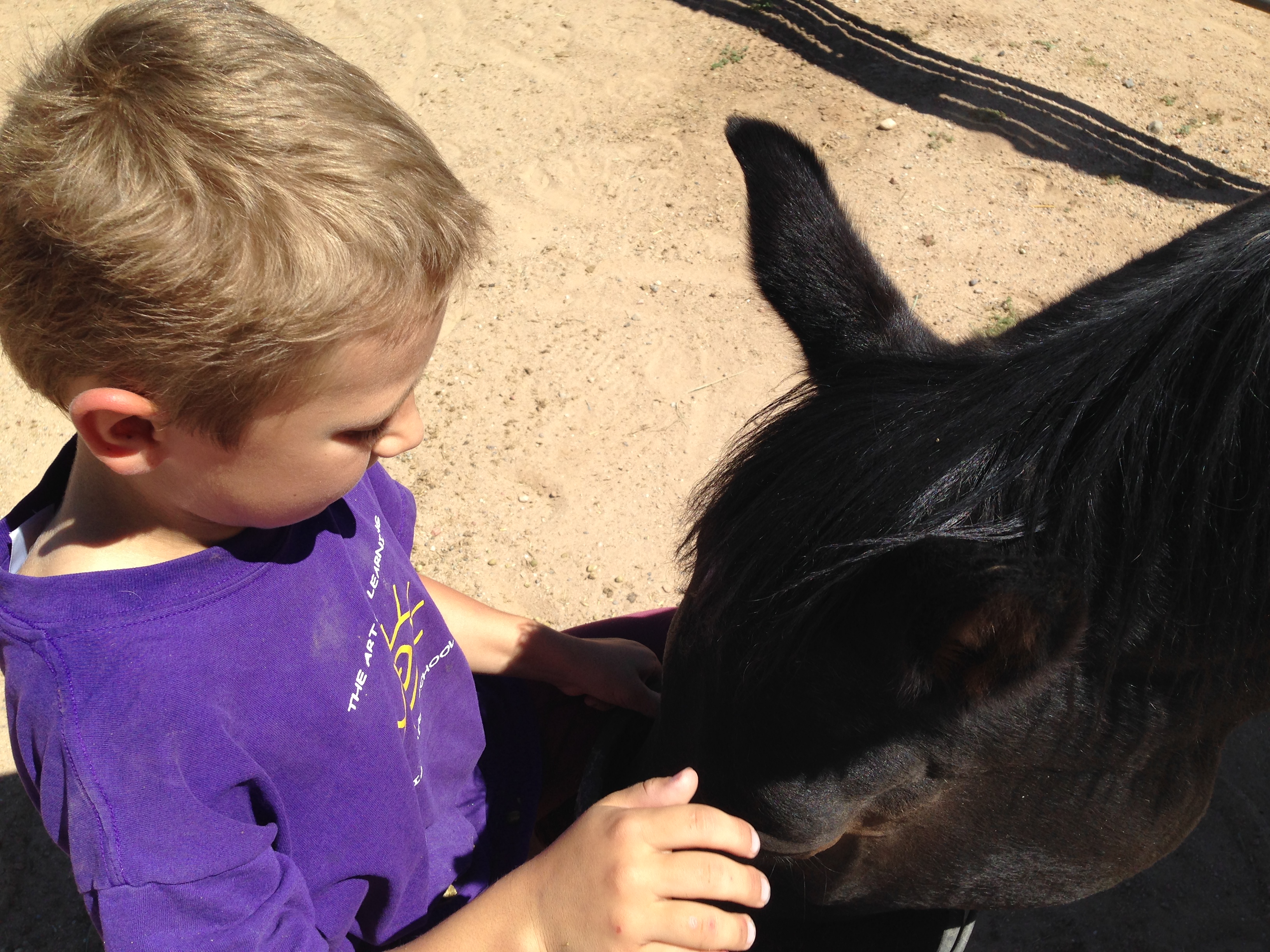 The other day I was doing a horse and rider session and became acutely aware of how the horse welcomed the opportunity to caretake her owner. This was a horse I’d not worked with before, but I’d worked with her owner.
The other day I was doing a horse and rider session and became acutely aware of how the horse welcomed the opportunity to caretake her owner. This was a horse I’d not worked with before, but I’d worked with her owner.
My horse and rider sessions are not riding lessons, I must stress that, because I’m not a riding instructor. They are bodywork sessions for the horse/rider duo in the saddle or bareback.
I work on what might be possible in the way of connection between horse and rider. If the rider has been experiencing pain while riding, I can begin to unravel the mystery of what that is and how the horse can help. Sometimes there are restrictions in the horse that are exacerbating it, or sometimes the horse is carrying the rider but not really assisting in her comfort. By increasing the awareness in the two bodies, we can find a better ease between them.
Sometimes the person just doesn’t feel comfortable in the saddle. When the rider achieves true comfort and connection, the horse can relax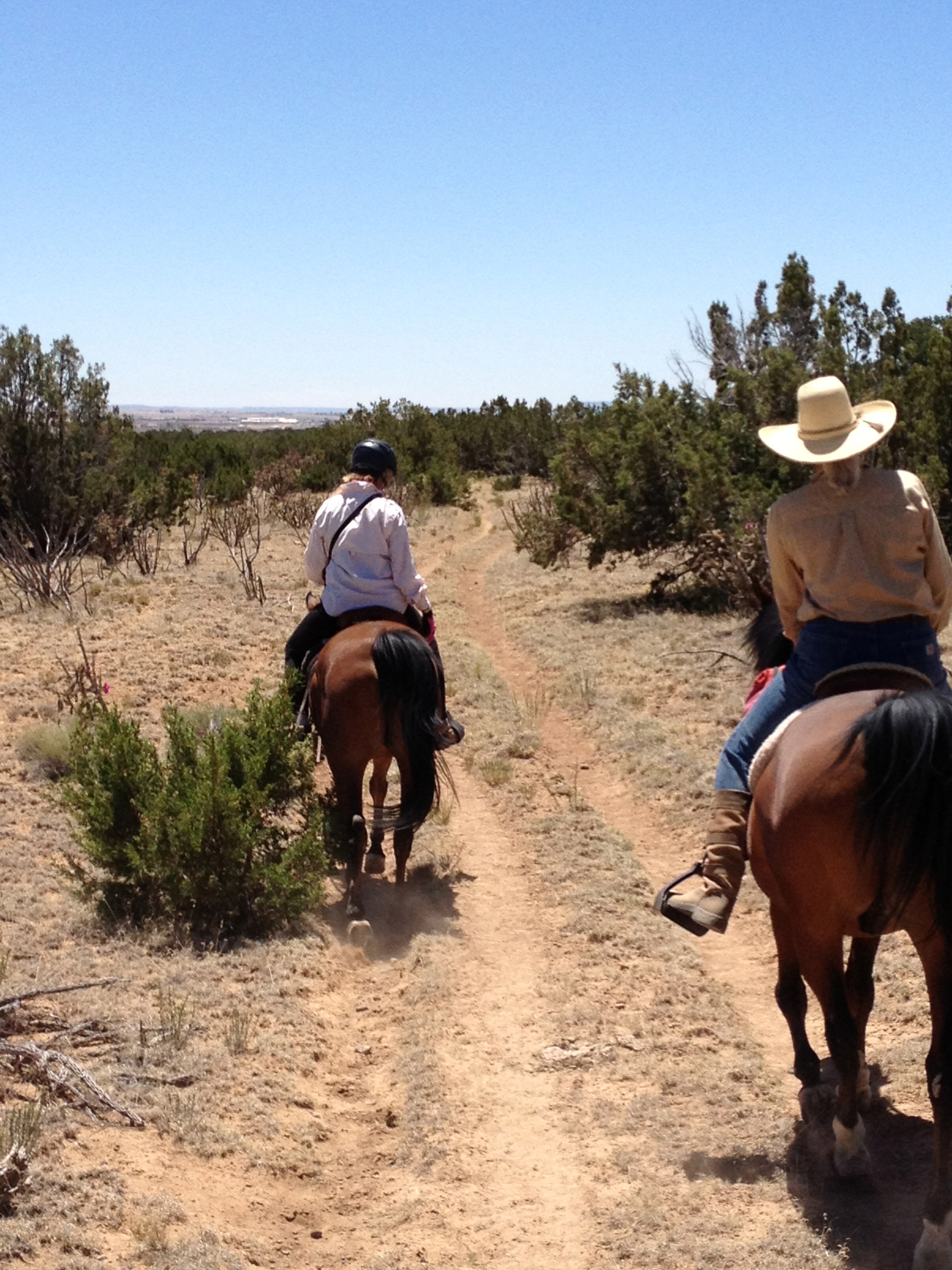 so much better. If you hold your foot in the stirrup stiffly for example, it translates up to the horse’s thoracolumbar region and creates tension there. With this particular horse, when I relaxed the rider’s feet and legs on one side, the horse yawned and relaxed big time. The legs and feet had become fluid and relaxed and were no longer creating that tension pattern.
so much better. If you hold your foot in the stirrup stiffly for example, it translates up to the horse’s thoracolumbar region and creates tension there. With this particular horse, when I relaxed the rider’s feet and legs on one side, the horse yawned and relaxed big time. The legs and feet had become fluid and relaxed and were no longer creating that tension pattern.
The way most of us have been taught to ride includes the rule “heels down.” The rule in itself is not bad, but it has created a situation of tension in the leg and foot for a lot of people. You can be safe in the saddle with your heels in a soft down position, without stressing out the whole leg and hip region.
Another common place to hold tension is in the shoulders and neck. We may have been taught to “sit up straight” in the saddle….and even at the dinner table!
Working with the tension in your neck and the tension held in the horse together, I can find more comfortable ways for you to relate in the saddle.
The ability to dangle our legs on the sides of the horse gives the hips a special release from their usual postures. One client mentioned that she gets great relief from her hip dysplasia from riding, now that she can’t hike anymore.
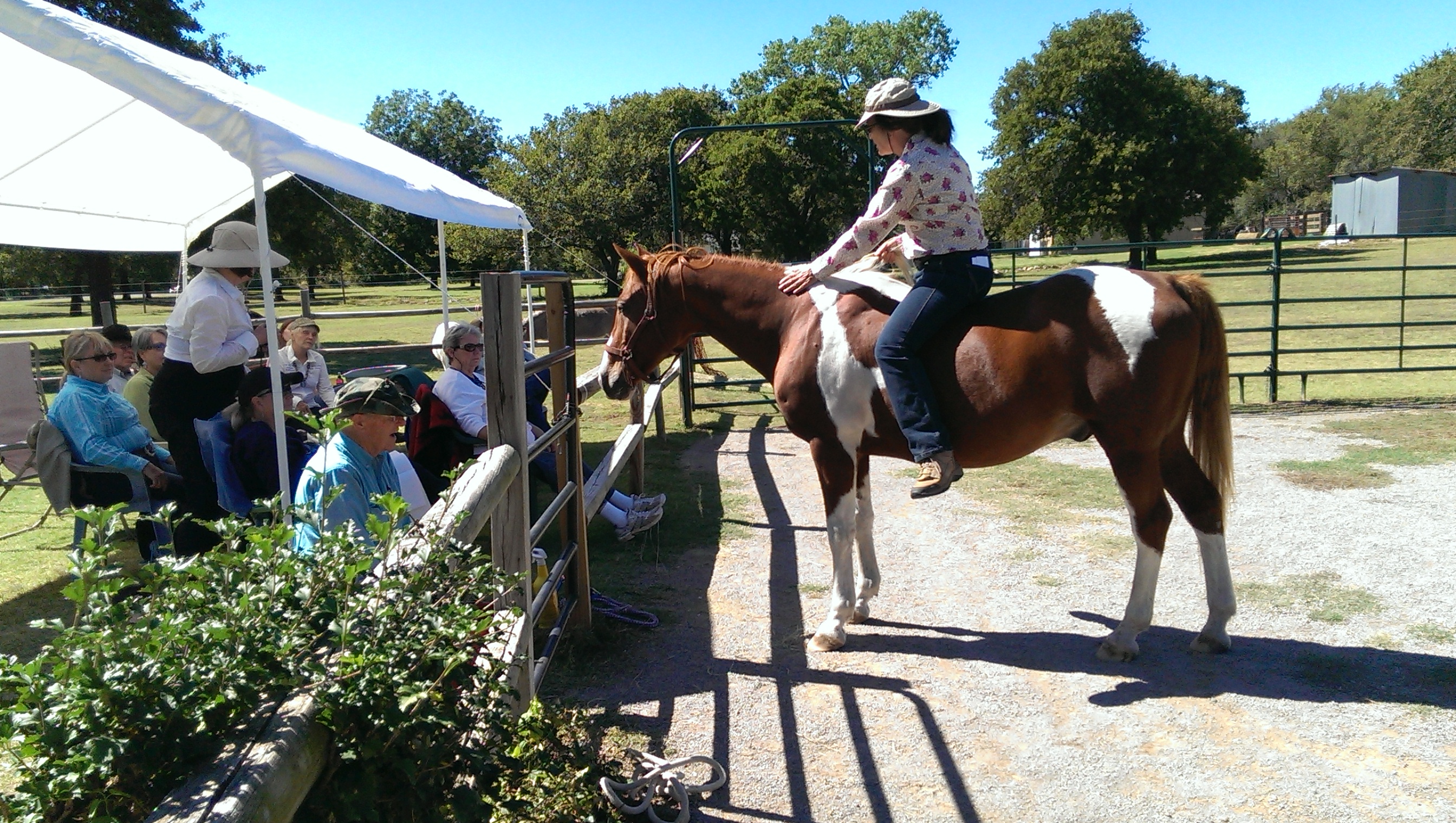 The way we have been taught to ride is only a fraction of the input that the body has received in terms of sitting on a horse. A good riding instructor can help with the types of changes you can make to help the horse meet your requests. There is so much value in this type of instruction.
The way we have been taught to ride is only a fraction of the input that the body has received in terms of sitting on a horse. A good riding instructor can help with the types of changes you can make to help the horse meet your requests. There is so much value in this type of instruction.
We all come with our own cellular history – what has created trauma in our lives: accidents, injustices, joys, are all packed in there on the intricate body map. We bring this all to the horse when we interact with her or him, and in an even more intimate way when we sit on her back.
The horse in turn brings her own cellular history that influences how she can interact with the rider. Additionally, the strength of the horse’s body and mind are key to whether she can carry the person comfortably or not.
Ignoring signals from the horse can have varying results – the horse, depending upon his individual nature, may just override his pain, he may react in kicking out, biting, bucking, or being otherwise unpleasant to be around.
Some of these responses are really pain-related and some of them may be muscle memory. With one horse I worked with, he persistently would want to bite his rider’s toe while she was in the saddle. His ribs were askew which creates pain when someone is on his back. It requires some maintenance working with the ribcage and spine to get that to feel okay. I actually got on this horse to see what he might be experiencing. I may have to work through what the health issues are for the horse to be okay in his body, then see how the rider fits into the picture.
I truly believe that it’s valuable for horses to be able to help out. By receiving specific answers to their needs, they can become more giving and then they want to give more. This isn’t true for every horse, because not every horse has the capability mentally or physically to give as a result of the input. Or, their giving may seem miniscule compared to what another can give, just as with humans.
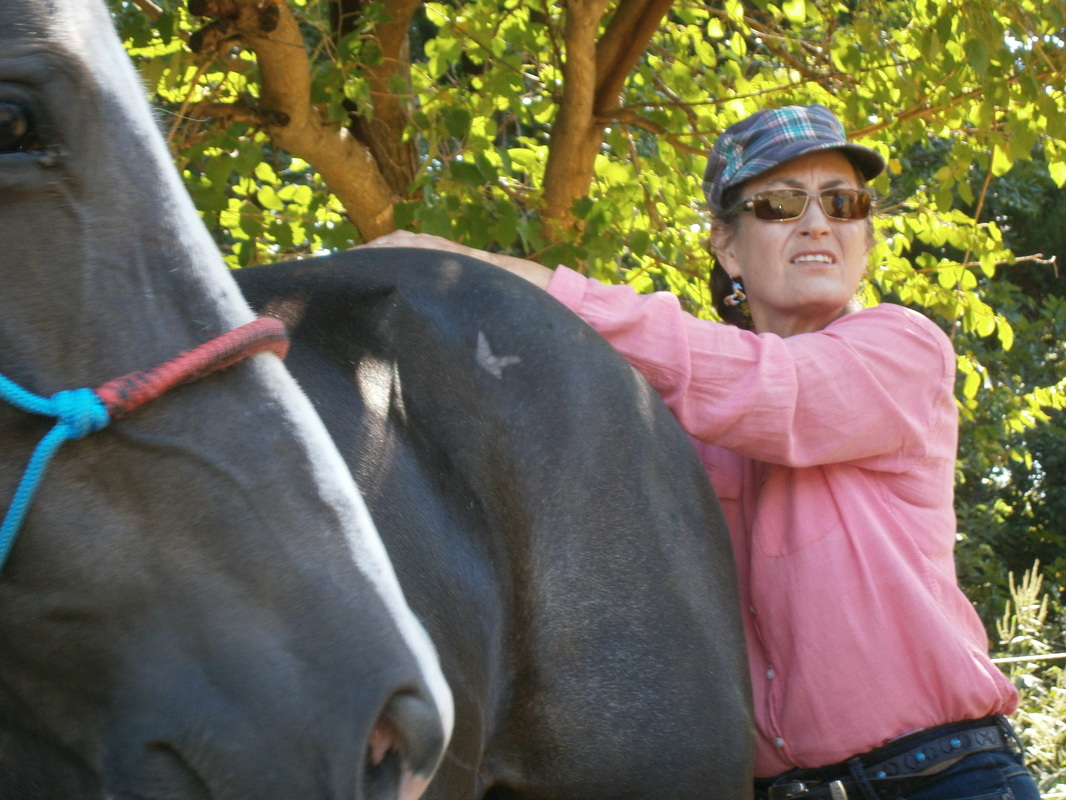
Horses who have been damaged in their lives through mishandling can have a harder time. And horses who have physical problems also may not be able to come up to human expectations as quickly. But horses also recognize when we are making an effort to help them, and they may welcome the opportunity to help too.
In the horse + rider session, the horse and the rider can practice caretaking, by bringing their particular strengths to the equation, helping each other toward greater comfort and responsive in the saddle.
(c) Susan Smith
*****
New events added!
Services include:
Bodywork: (Ortho-Bionomy for people, Equine Ortho-Bionomy, Equine Positional Release (EPR)): private sessions, tutorials, phone consultations, Horse & Rider sessions
Distance Healing Communication
Gift certificates
Liberty Coaching:
Clinics, mini-clinics, workshops,
Private and semi-private sessions, tutorials
Consultations: by appointment: 505.501.2478 or emailing susansmith@orthohorse.info Contact me for details.
Let me know if you want to do a clinic in your area. Prices will vary according to location & travel costs.
June 13 – Summer Liberty Workshop – 1-Day workshop held in Santa Fe, NM at Arrowhead Ranch. Contact susansmith@orthohorse.info for information. $140 before June 1 (Early Bird), $150 after June 1. PayPal and credit card payment available.
July 25 – Hang with the Herd – Join me and my herd under the cool canopy of the trees for some real quality time together –Experience herd, health and happiness. A new Liberty Foundations ½ day workshop for those who want an introduction to the work or to reinvigorate their liberty process.
We will sit in the cool of the trees with the herd during the morning, go work with the horses, then come back to the trees with cold drinks when it gets hot. Excellent herd to liberty experience! Space will be limited. Location TBA. Time: 9 a.m.-12:30 p.m. $75. Contact susansmith@orthohorse.info for information.
September 26-27 – Fall Liberty Weekend in Oklahoma — Susan Smith and Ruella Yates, co-instructors. Contact either of us: susansmith@orthohorse.info or ruella@libertyfoundations for further details. Cost: $325.
December 7-11 Sahaja 2015 5-Day Clinic on the island of St. Vincent in the Caribbean – Susan Smith & Stina Herberg. See details:
Independent Liberty Trainers Network
Susan & Stina Team Up to Make the Sahaja Clinic an Unforgettable Experience
Susan is a member of the Independent Liberty Trainers Network. libertytrainersnetwork.com/
Associate Instructor, Advanced Practitioner – Ortho-Bionomy & Equine Ortho-Bionomy
Practitioner, Equine Positional Release
Liberty Foundations Coach



